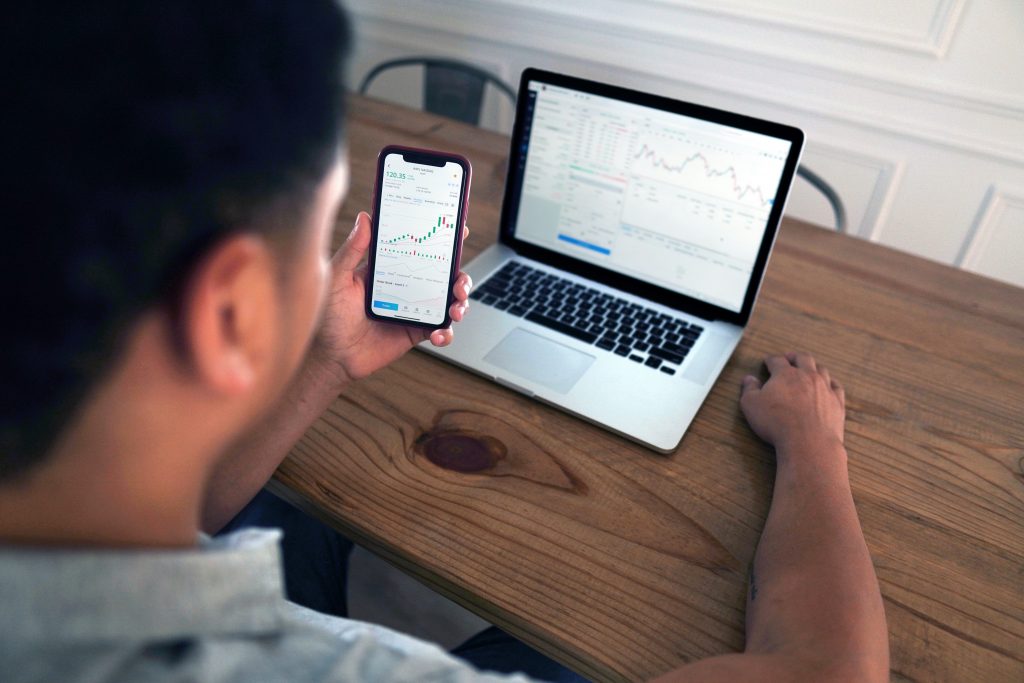Derivatives are securities whose value is determined by an underlying asset on which it is based. Therefore the underlying asset determines the price and if the price of the asset changes, the derivative changes along with it. A few examples of derivatives are futures, forwards, options and swaps. The purpose of these securities is to give producers and manufacturers the possibility to hedge risks. By using derivatives both parties agree on a sale at a specified price at a later date. In each derivative certain aspects are documented such as the relation between the derivative, type of underlying asset and the market in which they are traded. It is essential to understand the strengths and weaknesses of each derivative to employ them to their fullest potential.
1. Futures
Futures are exchange organized contracts which determine the size, delivery time and price of a commodity. Futures can easily be traded because they are standardized by an exchange. Per commodity traded there are different aspects specified in a futures contract. First of all is the quality of a commodity. For a commodity to be traded on the exchange, it must meet the set requirements. Second is the size of a single contract. The size determines the units of a commodity that is traded per contract. Thirdly is the delivery date, which determines on which date or in which month the commodity must be delivered. Thanks to the standardization of futures commodities can easily be traded and give manufacturers access to large amounts of raw materials. They can buy their materials on the exchange and don’t need to worry about the producer or take on contracts with multiple suppliers.
2. Forwards
Forwards and futures are very similar as they are contracts which give access to a commodity at a determined price and time somewhere in the future. A forward distinguish itself from a future that it is traded between two parties directly without using an exchange. The absence of the exchange results in negotiable terms on delivery, size and price of the contract. In contrary to futures, forwards are usually executed on maturity because they are mostly use as insurance against adverse price movement and actual delivery of the commodity takes place. Whereas futures are widely employed by speculators who hope to gain profit by selling the contracts at a higher price and futures are therefore closed prior to maturity.
3. Swaps
A swap is an agreement between two parties to exchange cash flows on a determined date or in many cases multiple dates. Typically, one party agrees to pay a fixed rate while the other party pays a floating rate. For example, when trading commodities the first party, an airline company relying of kerosene, agrees to pay a fixed price for a pre-determined quantity of this commodity. The other party, a bank, agrees to pay the sport price for the commodity. Hereby the airline company is insured of a price it will pay for its commodity. A rise in the price of the commodity is in this case paid by the bank. Should the price fall the difference will be paid to the bank.

4. Caps, floors and collars
Cap and floor options can be used as an insurance against negative price movements. When two parties agree on a swap contract, both parties take a risk on the price movement of the underlying commodity. To reduce this risk they can also agree on a cap or floor option. This is similar to a swap, because two parties agree to exchange cash flows. The difference is the usage of a maximum or minimum price.
With a cap option, a cash flow will only occur when the spot price rises above the cap price. When the price remains under the cap price a company will buy the commodity for the sport price. When the spot price rises above the cap price, the difference between the spot and cap price will be paid by the other party.
A floor option works similar to a cap option, because the exchange of cash flows only takes place when a condition is met. The only difference is that a cash flow now only takes place when the spot price drops below the floor price.
A collar option is a combination of both a cap and floor option. It sets a maximum and a minimum price. When the spot price remains between these two prices, the commodity will be bought for the current market price. Should the spot price rise or drop outside these boundaries, an exchange of cash flows will occur.
5. Swaptions
A swaption is a combination of a regular swap and an option. It gives a holder the right to enter a swap with another party at a given time in the future. Parties usually agree on a swaption when there are uncertainties about the price movements in the future. Just like with options, the swaption will only be executed if the price is more favorable than the spot price. If the spot price upon the maturity date is more favorable, the swaption will expire. In this situation a company will agree on a new swap, based on the current market prices.
6. Options, a form of derivatives
Options are a form of derivatives, which gives holders the right, but not the obligation to buy or sell an underlying asset at a pre-determined price, somewhere in the future. When you take an option to buy an asset it is called a ‘call’ and when you obtain the right to sell an asset it is called a ‘put’. To determine whether it’s profitable to exercise an option, the current market price (spot price) and the price in the option (strike price) need to be compared. By comparing both prices, a choice can be made to either exercise the option or let it expire. When exercising an option there are three positions on which the holder can find themselves.
The first is in the money (ITM), where the strike price is more favorable than the spot price and thus it will be advantageous to exercise the option.
The second is at the money (ATM) in which the strike and spot price are equal and so no advantage can be gained.
The third is out the money (OTM), where the strike price is higher than the spot price. In this case it is better to let the option expire and buy the commodity at the current market price.
There are two ways of settling an option between two parties. The first way is to physically deliver the underlying commodity. The other way is to cash settle the option. In this way the difference between the spot and strike price is paid to the holder of the option upon exercising of the option.
An option has a few advantages over other derivatives. The most important advantage is that an option is not binding, in the way is does not obligate one to buy a commodity. It gives you the right to buy it and so when the price of the option is higher than the current market price you can just let the option expire and buy at the spot price. The only loss made, will be the premium which is the cost for maintaining the option. Another advantage is the usefulness of options as a hedging tool. Options offer the tools to successfully hedge price movements with a small investment risk.
In this article, we explain more about the differences between derivatives and options.

6.1 Asian
This is a specific type of option, which like a normal option gives a buyer the right to buy an option. The difference with other options is the price of the underlying asset. The price for which the asset can be bought is not a single price, but an average of prices over a determined period. Advantages of Asian options are the relative low costs compared to other type of options. The costs are lower because the price fluctuation is limited due to the average of prices. Another advantage is limitation of sudden price movements near the maturity date. Due to the average of prices a sudden rise of the price will only have a small effect on the price.
6.2 European
With this type of option, the holder can exercise his option on the underlying asset only on the pre-determined date. He does not have the possibility to execute the option before this date and therefore has a limited ability to take advantage of sudden price movements.
6.3 American
With an American option it is possible to exercise an option on any moment until the maturity date of the option. This gives a lot of freedom to the holder to get maximum profit out of the option, by exercising the option on the best possible moment.
6.4 Bermudan
This type of option seems looks like a combination of both European and American options. This option cannot be exercised on any date before the maturity date, but on a number of set dates. This gives the holder a little more freedom, in comparison with an European option, to exercise the option on a favorable moment.
7. Ticks
A tick is a way of indicating a slightest price change for a specific commodity. A tick size can differ per commodity or futures contract. It is important to know the value of a tick, to understand what this will do to the equity of an account. Monitoring the activity of ticks for a certain commodity can help decide whether or not to enter a market for a commodity. It gives an indication on the volatility of the commodity price and possibly in which position of the pricing trend a market is. A tick also functions as a counter measure against extremely volatile prices. Exchanges employ a maximum tick size to control price volatility. When the maximum tick size is exceeded, the trading of such a contract is halted, due to the extreme price volatility, which makes the trading of this contract irresponsible.
8. Derivatives Management
Derivatives play a crucial part in your risk management activities. Managing the various derivatives within your portfolio can prove a difficult task without the correct tools. Agiblocks offers a simple but effective solution for managing all types of derivatives within your portfolio and employing these tools in your risk management activities. You can find more information about futures, options and forex management in our Knowledge Center.
Interested in a free demo of Agiblocks? Then don’t hesitate and request a demo (it’s totally free!)

